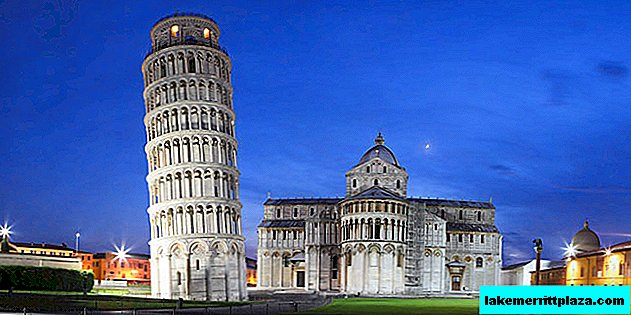Jenidze is a former tobacco factory, today it is an office center. It is decorated in a special Moorish style with a mixture of Art Nouveau. During construction, chimneys and exhaust pipes were “disguised” as minarets.

Yenidze, photo by Klaus Bostelmann
Yenidze - a former tobacco factory, a curious building that looks like a giant mosque, is located near the historic center of Dresden. It was built in 1909 and worked until 1953.
Why a mosque?

Art Nouveau building with elements of Moorish architecture, photo by Matth Martin
The idea to build a factory in the "eastern" style came to the manufacturer Hugo Zitz, he was engaged in the export of tobacco and cigarette production. Zitz visited Cairo, it was there that he saw a mosque, which was the prototype for the future factory building. And Jenidze is a place in Greece, from where tobacco was imported from.
Construction Features

Factory on the background of the Marienbrücke bridge, photo by superscheeli
During construction, the chimneys and exhaust pipes were “disguised” as minarets. This was necessary so as not to spoil the historical views and obtain a building permit near the Old Town.

Details of architecture, photo by jaime.silva
The architect was German-Martin Hammich. In the construction of Jenidze, he used advanced technologies using load-bearing reinforced concrete structures. In architecture, we see a mixture of styles, Art Nouveau and Moorish. The height of the building was 60 m, the dome - 20 m. The dome is made of colored glass. The facade is decorated with granite, colored concrete, tile, artificial sandstone and mosaics.
Not everyone welcomed the construction of a "mosque" in the city center. For this work, Herman-Martin Hammich was expelled from the Saxon Union of Architects. But despite all the troubles associated with the construction, it was the tobacco factory that became one of the new symbols of the city.
Jenidze now

Former tobacco and Former tobacco factory, given after restoration to a business center, photo jens
Today, Jenidze is an office center, there is a luxurious restaurant under the dome, and a night club in the basement.
How to get there
Take tram 6, 11 to the Kongresszentrum stop.








